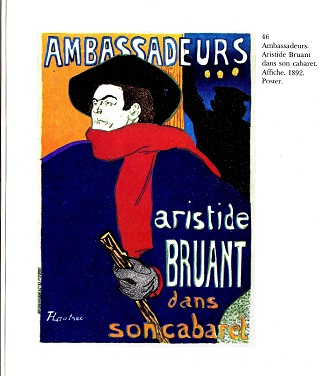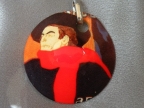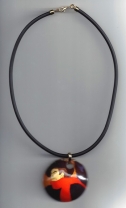
Henri de Toulouse-Lautrec
Henri Marie Raymond de Toulouse-Lautrec-Monfa or simply Henri de Toulouse-Lautrec (French (24 November 1864 – 9 September 1901) was a French painter, printmaker, draughtsman and illustrator whose immersion in the colourful and theatrical life of Paris in the late 1800s yielded a collection of exciting, elegant and provocative images of the modern and sometimes decadent life of those times. Toulouse-Lautrec, along with Cézanne, Van Gogh and Gauguin, is among the most well-known painters of the Post-Impressionist period. In a 2005 auction at Christie's auction house a new record was set when La blanchisseuse, an early painting of a young laundress, sold for $22.4 million U.S. Henri Marie Raymond de Toulouse-Lautrec-Monfa was born at the chateau de Malromé near Albi, Tarn in the Midi-Pyrénées région of France, the firstborn child of Comte Alphonse de Toulouse-Lautrec-Monfa and Adèle Tapié de Celeyran. He was therefore a member of an aristocratic family (descendants of the Counts of Toulouse and Lautrec and the Viscounts of Montfa, a village and commune of the Tarn department of southern France).
Paris
Toulouse-Lautrec was drawn to Montmartre, the area of Paris famous for its bohemian lifestyle and the haunt of artists, writers, and philosophers. Studying with Bonnat placed Henri in the heart of Montmartre, an area he rarely left over the next 20 years. After Bonnat took a new job, Henri moved to the studio of Fernand Cormon in 1882 and studied for a further five years and established the group of friends he kept for the rest of his life. At this time he met Émile Bernard and Van Gogh. Cormon, whose instruction was more relaxed than Bonnat's, allowed his pupils to roam Paris, looking for subjects to paint. From 1889 until 1894, Henri took part in the "Independent Artists' Salon" on a regular basis. He made several landscapes of Montmartre. At this time the 'Moulin Rouge' opened. When the Moulin Rouge cabaret opened, Toulouse-Lautrec was commissioned to produce a series of posters. His mother had left Paris and, though Henri had a regular income from his family, making posters offered him a living of his own. The cabaret reserved a seat for him and displayed his paintings. Among the well-known works that he painted for the Moulin Rouge and other Parisian nightclubs are depictions of the singer Yvette Guilbert; the dancer Louise Weber, known as the outrageous La Goulue ("The Glutton"), who created the "French Can-Can"; and the much more subtle dancer Jane Avril.
London
Henri de Toulouse-Lautrec's family were Anglophiles. Though not as fluent as he pretended to be, he spoke English well enough to travel to London. Making posters in London led him to making the 'Confetti' poster, and the bicycle advert. 'La Chaîne Simpson'. While in London he met and befriended Oscar Wilde. When Wilde faced imprisonment in Britain, Henri was a very vocal supporter of Wilde. Toulouse-Lautrec's portrait of Wilde was painted the same year as Wilde's trial.
Art
Throughout his career, which spanned less than 20 years, Toulouse-Lautrec created 737 canvases, 275 watercolours, 363 prints and posters, 5,084 drawings, some ceramic and stained glass work, and an unknown number of lost works. His debt to the Impressionists, in particular the more figurative painters Manet and Degas, is apparent. His style was influenced by the classical Japanese woodprints which became popular in art circles in Paris. In his works can be seen parallels to Manet's detached barmaid at A Bar at the Folies-Bergère and the behind-the-scenes ballet dancers of Degas. He excelled at capturing people in their working environment, with the colour and the movement of the gaudy night-life present but the glamour stripped away. He was masterly at capturing crowd scenes in which the figures are highly individualized. At the time that they were painted, the individual figures in his larger paintings could be identified by silhouette alone, and the names of many of these characters have been recorded. His treatment of his subject matter, whether as portraits, scenes of Parisian night-life, or intimate studies, has been described as both sympathetic and dispassionate. Toulouse-Lautrec's skilled depiction of people relied on his painterly style which is highly linear and gives great emphasis to contour. He often applied the paint in long, thin brushstrokes which would often leave much of the board on which they are painted showing through. Many of his works may best be described as drawings in coloured paint.
The above information is taken from "Wikipedia", the free encyclopedia. For a more detailed biography, go there.



